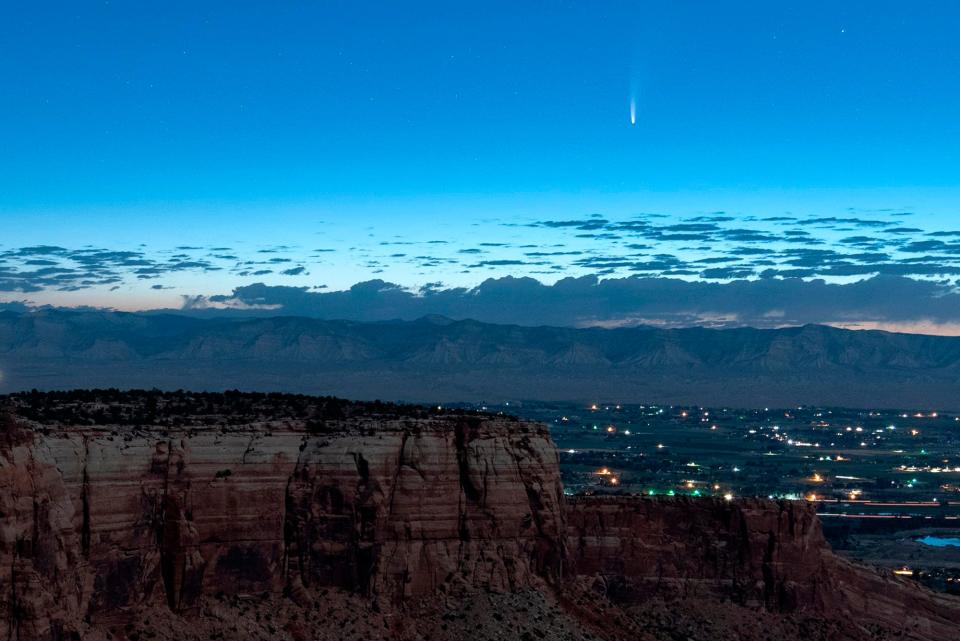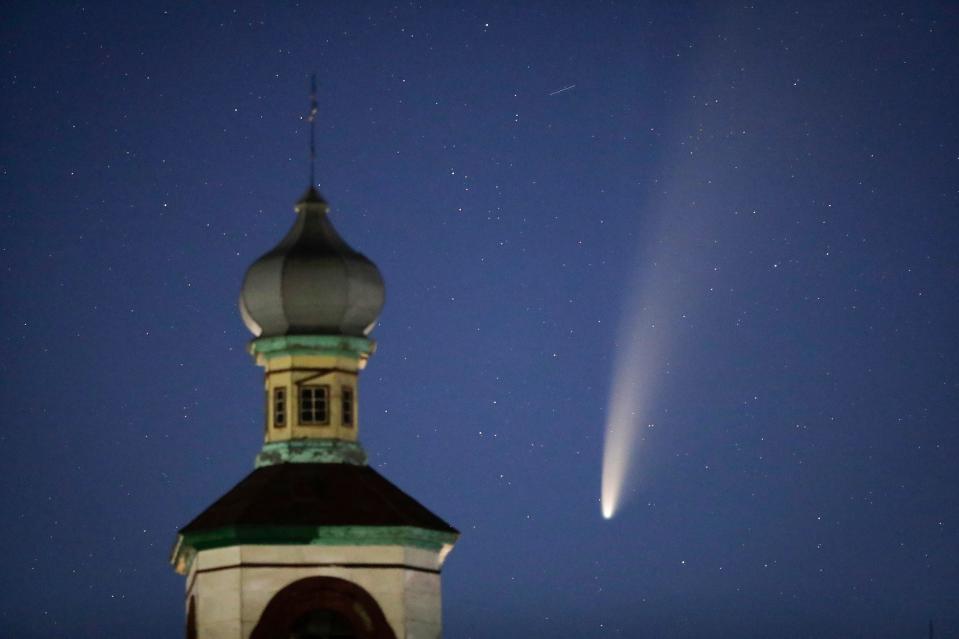Coping with COVID: Earth is terrible. Let's look to the stars.
Editor's Note: This is a preview of USA TODAY's newsletter Staying Apart, Together, a guide to help us all cope with a world changed by coronavirus. If you would like it in your inbox on Tuesdays and Saturdays, subscribe here.
It's Tuesday, and it's already a really tough week.
Every week since the pandemic began can arguably be called one of the tough weeks. But when the news of the outbreak gets this scary, it's hard to find any positivity to get us through another day, whether you're stuck at home or working outside it and worrying about exposure.
On the most difficult days, it's easy to fall into despair. On days (or, you know, weeks) like this one I try to focus on the basics: Get as much sleep as possible, drink a lot of water, talk to my loved ones, go outside for a (socially distanced) walk, cuddle my dog, limit my news intake and practice mindfulness and meditation. They are tiny victories, but taking care of myself is a victory nonetheless.
Writing this newsletter for all of you helps, too. We're all going to get through the week.

Today's appreciation for the wonders of space
Things haven't been great on Earth recently, so let's look at the sky instead. Newly discovered Comet Neowise is paying a visit to the inner solar system for the first time in 6,800 years.
According to USA TODAY's weather reporter Doyle Rice:
The comet has been getting brighter and brighter in the early morning sky, AccuWeather said, and in the coming days, it will make an appearance in the evening after sunset. ...
It's actually the brightest comet in 23 years, since Comet Hale-Bopp in 1997, according to NASA. Soon it will be seen in the northwestern sky after sunset, and it will appear to zoom just below the Big Dipper. ...
Be sure to take a look at the celestial visitor over the next few weeks, if you get the chance: It won't be back in our neighborhood for thousands of years, as it takes some 6,800 years to complete its journey around the sun, NASA said.
Here's how to see the beauty with your own eyes:
Start looking about one hour after sunset, when you’ll find it just over the northwest horizon as the last of twilight fades into darkness.
Look about three fists below the “bowl” of the Big Dipper, which is hanging by its handle high above, and perhaps a little to the right.
Although it's visible with the naked eye, a simple telescope or pair of binoculars can reveal more detail, especially when it is seen before twilight in the morning or after twilight in the evening.

The rest of this week, ending Sunday, is the best time to view the comet during the evening. "Comets are notoriously unpredictable, so it's impossible to know if this one will remain so easy to spot, but if it does, it should become easier for more people to observe as July goes on," NASA said.
You can also check out this artist's rendering of the comet's rise above Earth, created using time lapse photography from the International Space Station.
Today's reads
Many of us who have been working from home for months probably have the same question for our bosses: Is this the end of the office forever?
Considering how much we love pets in this newsletter I felt we had to discuss this development: There is apparently a new way to calculate dog years!
Should we go out to eat or not? USA TODAY Network's Bergen Record Food Editor Esther Davidowitz writes about the moral dilemma. We want to support local business, but diners are likely putting waitstaff and chefs in danger, no matter how many safety protocols are in place. There are no good options.
What is the future of weddings? Is it all Zoom all the time? Sanitizer favors? Delays upon delays? My colleague Erin Jensen talked to experts about what happens for American nuptials moving forward.
This week's Ask HR ponders if your employer can make you take on a new role during the pandemic.

This article originally appeared on USA TODAY: Staying Apart, Together: Earth is terrible. Let's look to the stars.

